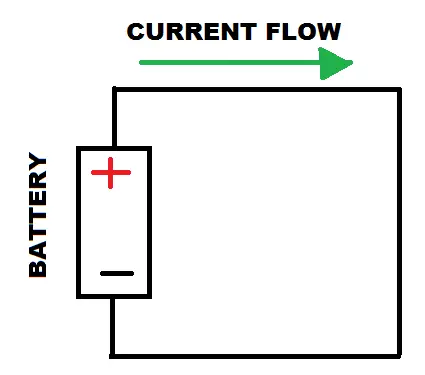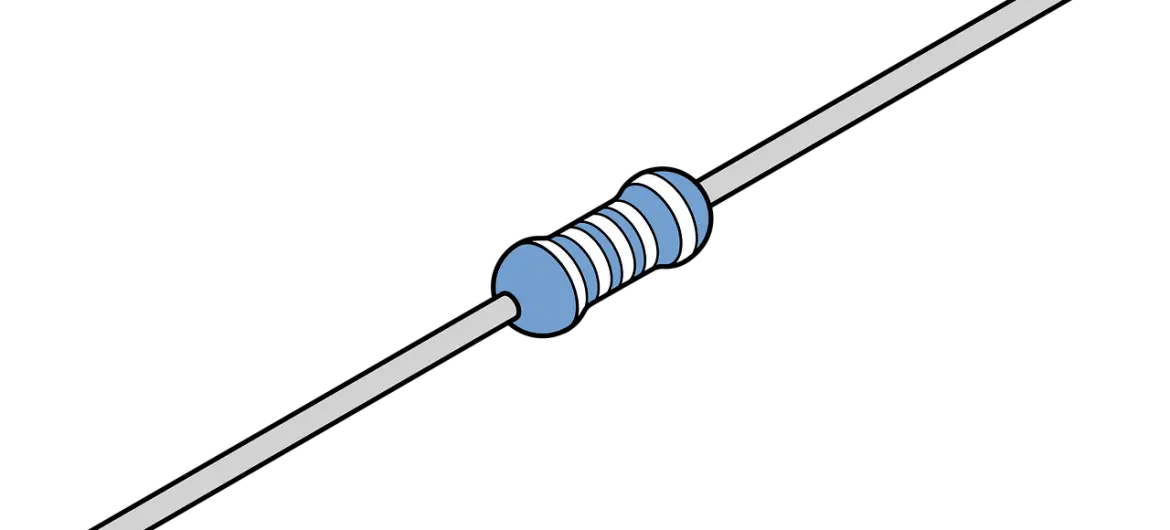Electronic components come in many different sizes, materials, and functionality.
Some components are also distinguished by whether they are polarised or not.
Are resistors polarised? Resistors are electronic components that are not polarised. This means they can be placed in a circuit in any direction. The functionality of the resistor will not be compromised no matter how it is placed in the circuit.
A polarised component needs to be placed in a circuit in a certain direction (determined by its positive and negative terminals). whereas non polarised components can be placed in any direction.
A resistor is a common component that can be found in every electronic circuit.
While resistors have many functions, it’s main job is to limit current flow.
What is polarity?
In the world of electronics, circuits function because of the flow of electrons (also known as current).
This current flows in direction from the positive terminals of a battery to it’s negative terminals through the circuit and other components..
This is known as Polarity.
The diagram below shows the flow of current.

Basics of a resistor
A resistor’s main purpose is to provide ‘resistance’ in a circuit which helps limit the current flow.
The higher the resistance the lower the current, and vice versa.
Resistors are available in a range of resistances depending on the application.
They are passive components which means they only consume power and never produce it.
Resistor Material
Resistors have come a long way.
The materials they have been constructed with have also changed with time.
The resistors used commonly today are made out of materials that include carbon, metal, and metal-oxide film.
If we take a look inside the resistor you will see a thin conductive material wrapped in a spiral around and insulating material.
The more conductive material wrapped in a spiral, the higher the resistance.
Why aren’t resistors polarized
Since the inside of a resistor is just conductive material that provides resistance, the direction that it is facing relative to the flow of current does not matter.
The conductive materials that are used to construct resistors do not have polarity.
This is why resistors are not polarised.
A great analogy for this is a speed bump is used to slow cars down.
Speed bumps have the same function of resistors ; to provide resistance and slow the speed of a car.
Speed bumps are constructed that they can be driven over in either direction.
Resistors are also constructed so that their placement in a circuit does not matter.
Types of resistors
Resistors come in range of resistances, sizes, termination/mounting types and power ratings.
Resistances
Resistors range in resistance values from as low as 1 ohm, all the way up 10 megaohm.
If you are not able to get the exact resistor value for your circuit, be sure you will be able to get a value close to it.
Sizes
The size of a resistor is largely influenced by its resistance.
The higher the resistance, the bigger its size and vice versa.
Mounting types
Resistors are available in 2 different mounting styles; SMD and Through hole.
For smaller integrated circuits, SMD resistors are used.
Through hole resistors are used for bigger circuits (mainly for prototyping or one off builds)
Power Ratings
Electronics circuits use a range of voltages and currents.
Power is a product of voltage and current.
If either voltage or current increases so does the power.
Every electronic component has a power rating.
You risk damaging a component if you work outside the limit of its power rating.
Because of this, resistors come in range of power ratings so you can pick the right resistor that fits the specifications of the circuit.
Applications
Resistors are very versatile components, and are used in electronics for many different applications which include:
- Limiting of current
- Voltage Dividers (used to step down voltages)
- Pull-up and Pull-Down resistors (used to tie inputs to ground or supply voltages)
A deeper look at Polarized components
Knowing that current only flows in one one direction (positive to negative) will give you a better understanding of the polarity of electronic components.
Devices and components that are polarised can have 2 or more terminals.
If a component has two terminals (a diode for example), one of the terminals will be marked positive (+) and the other negative (-).
If the component does not explicitly display a positive or negative sign, it will usually have other characteristics that indicate that it is polarised.
These characteristics can include one terminal being longer than the other, or a stripe near one of the terminals.
If the component has more than one pin (like an integrated circuit), it will have a designated pin for the supply voltage (+) and a designated pin for ground (-).
Common polarized components : Diode and LED
One of the most common polarised components used in many if not all circuitry is the Diode.
One of the main features of a diode is that it only allows current to flow in one direction.
Due to this fact, diodes are polarised by nature.
Light Emitting Diodes (LED) are a type of diode capable of emitting light and just like a normal Diode they only allow current to flow in one direction.
The positive terminal of a Diode and LED is known as an Anode while the negative terminal is known as the Cathode.
Common polarized components : Capacitors
Capacitors are used for storing charge and are the basis of every electronic circuit.
It is very similar to a battery.
However, while batteries can produce electrons, capacitors can only store them.
They are made with many different materials that range from Air, Mica, Ceramic, Cellulose, Porcelain, Mylar and Teflon.
Capacitors are components that can be polarised or non-polarised.
Polarised capacitors are commonly known as electrolytic and have their terminals marked with a (-) and (+).
Common polarized components : Integrated Circuits (IC’s)
Integrated circuits are devices that have multiple pins, which have a set of electronic circuits embedded on semiconductor material.
They include things like, Microcontrollers, 555 Timers, Voltage Regulators, Op Amps, Motor controllers and many more.
All integrated circuits have a supply voltage pin (positive), and a ground pin (negative) making them polarised.
In order for them to function properly these pins will have to be connected to the correct terminals of a voltage source.
Common polarized components : Voltage Sources
As we saw earlier, a flow of electrons is what makes a circuit work.
These electrons require a force to move around the circuit.
Voltage sources provide electrons with that force.
They can be a simple battery, a series of batteries, or a power supply depending on how much power is needed.
DC voltage sources are polarised due to the fact that they have a negative and positive terminal.
If the battery terminals are not connected the right way in a circuit, that circuit will not function properly.
Does the resistor have a positive and negative terminal?
Since resistors have no polarity, they do not have positive or negative terminals.
There are no markings on the resistor to indicate which is the right way for them to be placed in a circuit.
Resistors do have color bands which indicate their resistance and tolerance.
Resistor polarity in series and parallel circuits
In electronics, circuits have many configurations.
Most common configurations include Series and Parallel circuits.
In a series configuration, the current through the circuit remains the same, while voltage is distributed to components accordingly.
In a parallel configuration, the voltage remains the same across components, while current is distributed to components accordingly.
Because resistors have not polarised, their placement in series and parallel circuits does not matter.
They will still function the same.
What happens if you a place a polarised component the wrong way
If a polarised component is placed in a circuit incorrectly it will not work.
With most components like Integrated Circuits, Diodes, and LED’s placing them incorrectly will cause them to overheat and even smoke.
With capacitors you run the risk of popping them.
So be careful with capacitors, especially larger ones.
Final Thoughts
Polarity is an important concept in electronics, as many components are polarized.
Polarity determines how a component is placed in a circuit.
Placing it the wrong way can damage that component.
However, resistors are components that are not polarized, and will not be damaged no matter how they are placed.





